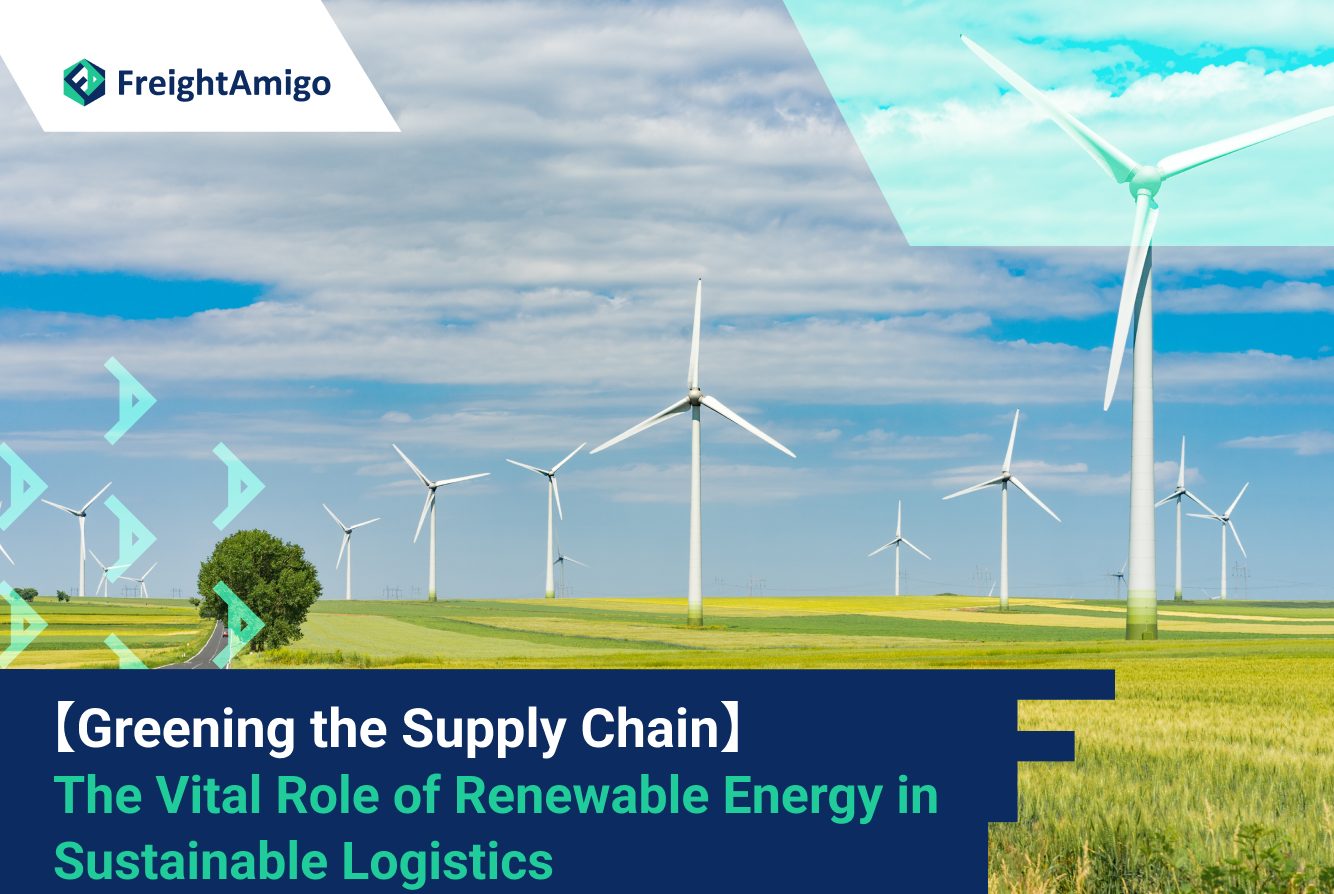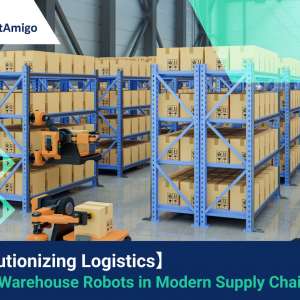Sustainable logistics has become a hot topic in recent years, as businesses and consumers alike are increasingly concerned about the environmental impact of their supply chains. One crucial aspect of sustainable logistics is the use of renewable energy sources to power various operations in the supply chain. Renewable energy offers a greener and more sustainable alternative to traditional fossil fuel-based energy, and its adoption can have significant positive effects on the environment. In this article, we will explore the importance of renewable energy in sustainable logistics, the advantages it brings, the different types of renewable energy sources suitable for logistics operations, the challenges and considerations in adopting renewable energy, future trends in renewable energy for sustainable logistics, and best practices for integrating renewable energy into supply chain operations.
Author Name:Tiffany Lee – Marketing Analyst at FreightAmigo
Want to compare the best Express, Air Freight, Sea Freight, Rail Freight & Trucking rates so as to have better control on cost?
The Importance of Renewable Energy in Sustainable Logistics
Renewable energy plays a vital role in greening the supply chain and achieving sustainability goals. Unlike fossil fuels, which are finite resources that contribute to greenhouse gas emissions and climate change, it sources such as solar, wind, hydro, and biomass are replenishable and have minimal environmental impact. By using renewable energy in logistics operations, companies can significantly reduce their carbon footprint and contribute to mitigating climate change. Additionally, those clean energy sources are often more cost-effective in the long run, as they can help reduce energy costs and dependence on volatile fossil fuel prices.
Advantages
There are numerous advantages to using renewable energy in the supply chain. Firstly, renewable energy sources are abundant and widely available, making them a reliable and sustainable choice for powering logistics operations. Solar panels can be installed on warehouse rooftops, wind turbines can be erected in suitable locations, and biomass energy can be generated from organic waste. Secondly, renewable energy sources are often more cost-effective in the long run. While the initial investment may be higher than traditional energy sources, the operational and maintenance costs are generally lower, resulting in significant savings over time. Thirdly, companies that embrace renewable energy in their supply chain operations often benefit from positive brand image and reputation, as they demonstrate their commitment to sustainability and environmental responsibility.
Types of Renewable Energy Sources for Logistics Operations
There are several types of clean energy sources suitable for logistics operations.
-
Solar energy
Solar energy is one of the most popular choices, as it can be easily harnessed through the installation of solar panels on warehouse rooftops or in open spaces. Solar energy can power lighting systems, heating, and cooling equipment, as well as electric vehicle charging stations.
-
Wind energy
Wind energy is another viable option, especially for companies located in areas with consistent wind patterns. Wind turbines can generate electricity to power various logistics operations, including warehouse facilities and transportation vehicles.
-
Hydroelectric power
Hydroelectric power is suitable for companies located near rivers or other water bodies, as it harnesses the energy of flowing or falling water to generate electricity.
-
Biomass energy
Biomass energy, derived from organic waste materials such as wood chips or agricultural residues, can be used to produce heat or electricity for logistics operations.
Challenges and Considerations
While the adoption of renewable energy in logistics can bring numerous benefits, there are also challenges and considerations that companies need to address. One of the main challenges is the initial investment cost, as the installation of clean energy infrastructure can be expensive. However, companies can overcome this challenge by exploring financing options, such as leasing or power purchase agreements. Another consideration is the intermittent nature of certain renewable energy sources, such as solar and wind. Companies need to invest in energy storage solutions or have backup systems in place to ensure uninterrupted power supply. Additionally, the integration of clean energy into existing logistics operations may require infrastructure upgrades and changes in workflow, which should be carefully planned and executed to minimize disruptions.
Future Trends
The future of renewable energy in sustainable logistics looks promising, with several trends emerging. One trend is the development of more efficient and cost-effective renewable energy technologies. Advances in solar panel efficiency, wind turbine design, and energy storage solutions are making renewable energy more accessible and affordable for logistics operations. Another trend is the integration of renewable energy with other innovative technologies, such as artificial intelligence and Internet of Things (IoT). Smart energy management systems can optimize renewable energy usage, predict energy demand, and improve overall energy efficiency in the supply chain. Furthermore, there is a growing focus on renewable energy partnerships and collaborations. Companies are joining forces to invest in large-scale renewable energy projects and share resources, knowledge, and best practices.
Best Practices for Integrating Renewable Energy into Supply Chain Operations
To successfully integrate renewable energy into supply chain operations, companies should follow best practices. Firstly, conducting a thorough energy audit is essential to identify areas of high energy consumption and prioritize renewable energy implementation. This audit can help determine the most suitable clean energy sources for specific operations. Secondly, companies should set clear sustainability goals and regularly track and report progress. Transparent communication with stakeholders, including employees, customers, and suppliers, is crucial to build trust and engagement. Thirdly, companies should explore partnerships with renewable energy providers and government agencies to access incentives, grants, or tax benefits that can offset the initial investment costs. Finally, integrating renewable energy should be part of a holistic sustainability strategy that considers other aspects of the supply chain, such as waste reduction, recycling, and sustainable transportation.
FreightAmigo helps companies implement low-carbon logistics and green transportation
As part of the logistics and transportation industry, FreightAmigo is committed to launching the AmiGo Green program, which aims to assist businesses across various sectors in achieving their green goals and living a low-carbon lifestyle. AmiGo Green combines big data analytics and innovative AI technology to provide businesses with carbon emission calculators, green freight routes, and digitalized freight documents. These tools help your company achieve energy-saving and emission-reduction targets, enabling low-carbon logistics practices. Join FreightAmigo in implementing your carbon reduction policies and let’s make trade greener !
There are different options for cargo transportation. If you want to choose the most convenient and suitable solution, it is best to have the full support of logistics experts! If you are planning to ship goods overseas, please go to the FreightAmigo page for inquiries.
===
Read More:
Securing the Future: Ensuring Data Privacy in Warehouse Robots Operations
【Southeast Trade Market】Understanding the Rise and Exploring Opportunities
===
If you have any inquiries on logistics/supply chain, feel free to contact FreightAmigo now:
Chat with us online OR
Phone : +852 28121686
WhatsApp: +852 27467829









































